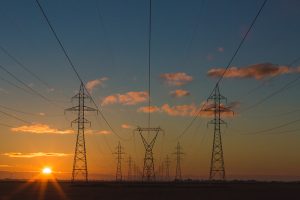Microgrid Death Spiral: The Argument Over “Obsolete” Power Infrastructure
 In January of 2013, the Edison Electric Institute released a report titled “Disruptive Challenges: Financial Implications and Strategic Responses to a Changing Retail Electric Business”, which outlined a variety of challenges traditional power utilities will face in the upcoming years. The current power infrastructure in the United States wasn’t constructed with end-user power generation in mind, so the increasing power independence of households and businesses creates threats of “irreparable damages to revenues and growth prospects.” Chief among new technologies are advanced renewable energy sources, including solar, and the growth of grid-independent distributed power generators, aka microgrids.
In January of 2013, the Edison Electric Institute released a report titled “Disruptive Challenges: Financial Implications and Strategic Responses to a Changing Retail Electric Business”, which outlined a variety of challenges traditional power utilities will face in the upcoming years. The current power infrastructure in the United States wasn’t constructed with end-user power generation in mind, so the increasing power independence of households and businesses creates threats of “irreparable damages to revenues and growth prospects.” Chief among new technologies are advanced renewable energy sources, including solar, and the growth of grid-independent distributed power generators, aka microgrids.
 Microgrids are households and communities that leverage solar power, wind power, and natural gas to generate their own electricity and potentially still have surplus to sell. Advancements in battery storage technology and microturbine generation, some analysts believe, will lead to a “cycle of decline [that] has been previously witnessed in technology-disrupted sectors (such as telecommunications) and other deregulated industries (airlines).” Less optimistic writers have referred to this potential cycle of decline as a “death spiral”
Microgrids are households and communities that leverage solar power, wind power, and natural gas to generate their own electricity and potentially still have surplus to sell. Advancements in battery storage technology and microturbine generation, some analysts believe, will lead to a “cycle of decline [that] has been previously witnessed in technology-disrupted sectors (such as telecommunications) and other deregulated industries (airlines).” Less optimistic writers have referred to this potential cycle of decline as a “death spiral”
Already functional in places as diverse as Alaska, Haiti, and New Jersey, microgrids aren’t news, but their increasing reputation for practicality is newsworthy. David Crane, CEO of NRG Energy, put it bluntly at February’s ARPA-E Energy Innovation Summit: “Everyone just stop a moment and think how shockingly stupid it is to build a 21st-century electric system based on a system of 130 million wooden poles… Stop trying to rearrange the deck chairs on the Titanic, and start talking about, ‘How do we get rid of the grid?’
How long until we are all firing up turbines in our backyards and the obsolete contemporary power grid is nothing but a memory? The answer is this: anywhere from 10 years to never, depending on which experts you poll. One report, released by the Rocky Mountain Institute, claims that California, Hawaii, and New York will have microgrid parity in a decade. According to Richard Lester, head of the MIT Department of Nuclear Science and Engineering, “The electricity industry over the next 20 years is going to be looking at changes the scale of which we haven’t seen in this industry for 100 years.” However, Mark P. Mills of the Manhattan Institute doubts that the contemporary grid is in much danger at all.
With the constant advent of novel power generation technologies and the ongoing debate over whether to abandon and advance or adapt and upgrade, the topic of sustainable power generation and grid obsolescence is poised to remain a hot one for the foreseeable future.
The GDCA Team




